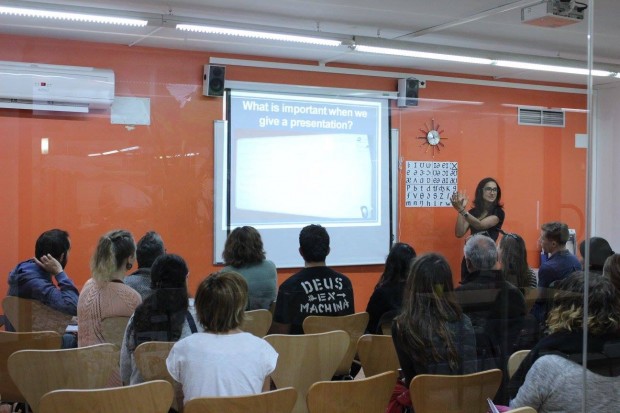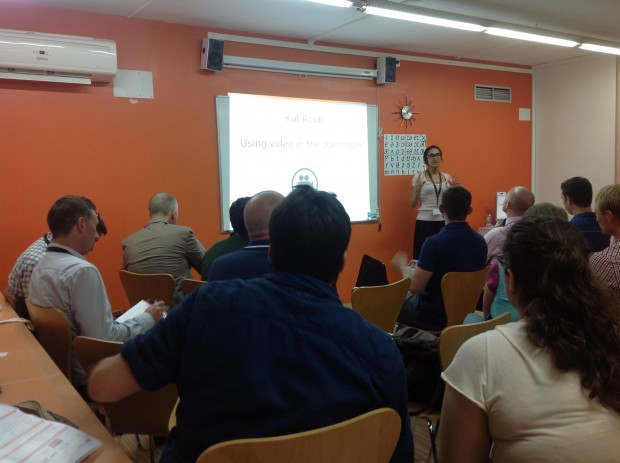Although Bennet Miller films are not my taste they are acclaimed and there is no denying that he is a good director. I actually prefer is adverts to be fair, especially Little Miss Puffytail which is one of a series of three 30 second toilet paper ads that he has recently produced for Quilted Northern.
I recently used the Little Miss Puffytail video in class, to draw learner awareness to intonation and its relation to attitude when speaking. My students have a habit of talking in long monotone stretches of discourse, without pausing or chunking, so I also wanted them to consider these features.
Here are the stages of the activity:
- Show the first frame of the advert on pause. Students describe the picture using as much specific vocabulary as possible, with the teacher providing any unknown lexis. (This is particularly useful for the Cambridge speaking test part 2 where students are asked to describe 2 pictures).
- Students predict what they think is going to happen in the video, where the video was shot, and for what purpose. They can also talk about the plot and any other characters they think may appear.
- The first playback is silent for students to see if their predictions were correct. They usually detect that it is an advert. I get them to script it out using their imagination!
- The second playback is with sound – subtitles can be turned on if desired. Once it has been viewed, the students brainstorm adjectives for how Miss Puffytail is feeling. I get them to think about why she is feeling this way, and how they were able to detect this . This highlights the point that they were able to discover the feeling from her solemn intonation.
- Open class, attitude, intonation and pausing are discussed, and the teacher boards phrases from the ad with the intonation and pauses marked in red.
- The students do the same to their scripts, but they do it firstly for feeling sad, and secondly for feeling happy and enthusiastic. Teacher monitors to help with doubts.
- Students practise both versions of their scripts together in pairs and record one sad and one enthusiastic version using their mobile phones.
- The students playback the recordings to listen for the differences in intonation in the two attempts – hopefully there are some!
I found this was an interesting and useful activity for the learners to make them aware of the significance of intonation in the delivery of what we say, and to encourage them to vary their intonation when they speak. It created a lot of interaction and emergent language.







